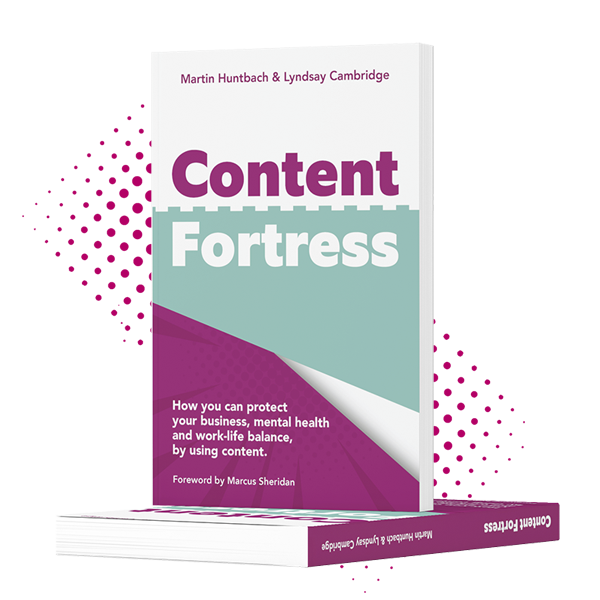How to Use Content to Transform Prospects into Your Dream Clients

You need to stop attracting your ideal customers. Right now.
Wait.
What?
Yep, we know. We’re forever told – all you need to do is attract your ideal clients! And now we’re telling you to just stop it, okay.
Because we’ve all spent our time coming up with our perfect client.
They have a name, a job and a bunch of hobbies.
They always pay on time (obvs). They never question our methods and of course, they trust us implicitly. They respect our time, our processes and what we will and won’t do. They’re also on our wavelength. We match in personality perfectly.
They sound perfect, right? We’ve all dreamt up this person. This magical being. This ‘angel-client’, sent to us from the client wonderland factory.
The problem is, they don’t quite exist. Not yet, anyway.
Even if on the surface you attract this ‘ideal client’, that doesn’t mean you won’t encounter problems or communication issues with them later down the line. They don’t yet understand everything about you and your business.
Attracting your ideal clients doesn’t guarantee a seamless relationship.
You need to reframe your brain from attracting your ideal clients.
Instead, you need to actively train your prospects into becoming your dream customers.
And to do this, you’re going to need content to help you.
In this blog post, we’re going to run through the types of content you can create that will turn prospects into dream clients. This all comes from our book, Content Fortress.
What is Guiding Content?
Wouldn’t it be great if every client who got in touch with you:
- understood their responsibilities?
- understood what they needed to have before they hired you? E.g. a logo, brand guidelines etc.
- understood your industry jargon?
- had all the documentation you needed?
- knew that you were the company they wanted to work with or buy from?
Well, that sounds amazing, doesn’t it?
Having a prospect this prepared before they even speak to you means that you’re much more likely to get the sale (win!). But even more than that, the conversation with your prospect will be a lot easier and faster. And when they do finally become a client, they’ll feel comfortable and more trusting of you.
How do you guide someone from a prospect to a dream client?
All you need to do is create ‘guiding content’. This is content that helps guide your audience into becoming your dream clients.
It educates them on your services, industry and your expectations.
But more importantly, it helps put your clients at ease.
It identifies the spots where your client may feel uncomfortable or awkward, and it erases any doubt or scepticism.
Using Empathy to Put Your Potential Clients at Ease
When we ran a web design agency, we found that prospects could:
- Have a fear of zoom calls (before 2020 hit and ‘zoom’ was everything)
- Be sceptical of web designers (having been burned in the past)
- Not understand the basics (and feel embarrassed by it) for example, they might not know the difference between WordPress and Wix, or even what SEO is
- Feel like agencies were ‘salesy’ and felt uncomfortable with it
- Want us to pitch to them because that way they could remain in control
It’s important that you identify the areas where your client feels uncomfortable. And more importantly, empathise and try to eradicate this discomfort (while educating your prospect at the same time).
The tale of two web design agencies…
Imagine you have two web design agencies. On their ‘web design’ service page, they have a button to book a free twenty-minute call with them.
Now imagine you hit that button.
Web Design Agency A sends you a confirmation of your call via email. After that, they send you zero information before your call. Zip.
Now imagine that Web Design B sends you a series of emails.
These emails will have links to content such as…
- a jargon buster
- an article on how to spot a ‘bad web designer’
- an article about their prices
They also send you an unbiased, comprehensive ‘web design buyer’s guide’ so you know exactly how to find the right web designer for you.
Finally, they’ll also send you an article about exactly what will happen during the free twenty-minute call. What you will discuss and some information on how to work the tech such as zoom. And they’ll also explain a bit about themselves, their culture and who they are.
All of this right before you get to speak with them.
Which one do you think will lead to a dream client?
Web Designer B, right?
Their prospects will feel more relaxed and comfortable about the call. They won’t think, ‘oh this person is trying to sell to me.’
And the call will be much more efficient now the prospect has a better understanding of the product/service.
Now Web Designer A may have attracted their ideal client, but they haven’t trained them. They haven’t empowered them. In fact, they haven’t done anything.
When this happens, it can lead to prospects feeling uneasy or confused about what will happen next. The prospect will need more explaining how things work. They’ll need time to mentally process all the information on the call (rather than consuming a lot of content beforehand in their own time). They’re less likely to be in a position to say yes straight away.
How to Prevent Ghosting By Using Guiding Content
If you don’t use guiding content, then your prospect will feel less confident on the run-up to the call. They may worry it’ll be a sales pitch. They might be confused about what tech they need. Inevitably, this can lead to one thing…ghosting!
They might not end up on the call at all.
And this can be true of any industry. Think about when you book that free session at a gym and you receive zero information from gym. The potential customer might start to worry. They may think, where do I park? Are there lockers I can use? Will someone sell a membership to me? What if I don’t know where to go or what to do? What if I make a fool out of myself?
Essentially, you don’t want your client to feel any unease before they meet you. Otherwise, they might not meet you at all!
Stop with the smoke and mirrors marketing
It’s old-fashioned, but some agency owners don’t like their clients to understand the ins-and-outs of their business or products. They prefer to create the illusion that they hold the secrets, and the customer must wait until they’ve paid to find them out.
And they expect the customer to put them on a pedestal.
But there’s this little thing called the internet that can catch these people out.
Anyone can research anything these days. And if you’re not creating guiding content to help people understand more about your business/products/services, then your client will go somewhere else.
What does guiding content look like?
Guiding content can come in lots of forms. But it’s all about educating your customers, making sure they understand your product/service fully and using empathy to ease their concerns.
You can use blog posts, buyers guides, or simply the content within emails to do this.
Where to start with guiding content
Think about your most vulnerable spot in the process leading up to someone buying from you. Where is it the customer backs out? Can you create content to help them, make them feel more secure, and give them confidence and knowledge?
Start right there.
And if you want to know more about how to create that kind of content that creates your ideal customers, check out our book, Content Fortress.
Want some more?
Of course you do. Check out these articles...

What is a Content Fortress and how can it help your agency get better, higher-paying clients?

Why Every Agency Needs to Create ‘Sales Content’ (and how to do it)


How to Use Content to Transform Prospects into Your Dream Clients


